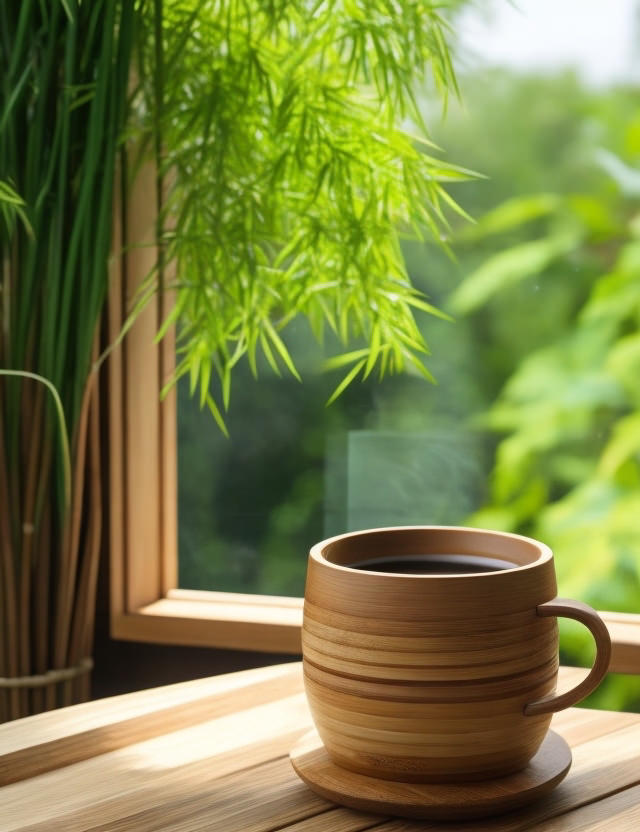We have been using bamboo spoons (and stirrers) for a while and enjoying the size, texture and lack of clanking in the cup. Recently though, I saw some info that formaldehyde can seep from bamboo when using a bamboo cup for a warm drink… like our coffee. So, I dug into the whole pros and cons of bamboo and coffee.
Positives:
Eco-Friendly: Bamboo is a grass that can grow up to a meter in a day, depending on the species. This rapid growth means that it can be harvested frequently without depleting the resource. Moreover, bamboo cultivation can have a smaller ecological footprint than tree plantations, as it requires fewer pesticides and artificial fertilizers.
Biodegradable: Unlike plastics or certain other materials that can take centuries to break down, bamboo decomposes relatively quickly when exposed to natural elements. This decomposition process returns essential nutrients to the earth and doesn’t produce harmful residues.
Lightweight: The natural structure of bamboo makes it both strong and light. This combination results in a cup that’s easy to carry around, especially beneficial for on-the-go usage.
Natural Insulation: Bamboo has pockets of air within its structure, giving it a natural insulating quality. While it won’t keep your coffee hot for hours like a thermos might, it can provide a bit more insulation than some other materials.
Unique Aesthetics: The natural grains, color variations, and unique patterns in bamboo make each cup distinct. This aesthetic can be appealing for those looking for something that feels organic and artisanal.
Durable: With proper care, bamboo can resist cracking and withstand daily wear and tear. It also won’t shatter into dangerous shards like glass.
Negatives:
Flavor Influence: Especially when first used, bamboo can sometimes have a distinct taste, often described as woody or grassy. This taste can transfer to beverages and can be especially noticeable in more subtle drinks like water or certain teas.
Care Requirements: Bamboo is naturally porous, making it more susceptible to absorbing flavors and moisture. It’s essential to wash bamboo cups shortly after use and dry them thoroughly to prevent mold and bacterial growth.
Durability Limitations: Prolonged exposure to moisture can weaken bamboo, making it prone to splits and cracks. This limitation can make bamboo cups less long-lasting than other materials, especially if not cared for properly.
Heat Sensitivity: Drastic changes in temperature can cause bamboo to warp or crack. So, pouring boiling water directly into a bamboo cup might not be advisable unless it’s designed to handle such temperatures.
Not Always Microwave Safe: Bamboo doesn’t fare well in microwaves because the rapid heating can cause the material to crack. Additionally, if there are any metal elements (like a logo or decoration), it’s unsafe for microwave use.
The Formaldehyde Concern: To make bamboo products more resilient, some manufacturers might treat them with chemicals. This treatment can include formaldehyde-based glues in laminated bamboo products or other chemical finishes. These chemicals, when subjected to heat or acidic foods and drinks, could leach into your beverage.
So, my advice is to do your research and find out by who and when the bamboo mug was created and if it fulfills your worry free coffee drinking pleasure needs.
Please note that if you purchase from clicking on the link, some will result in my getting a tiny bit of that sale to help keep this site going.


